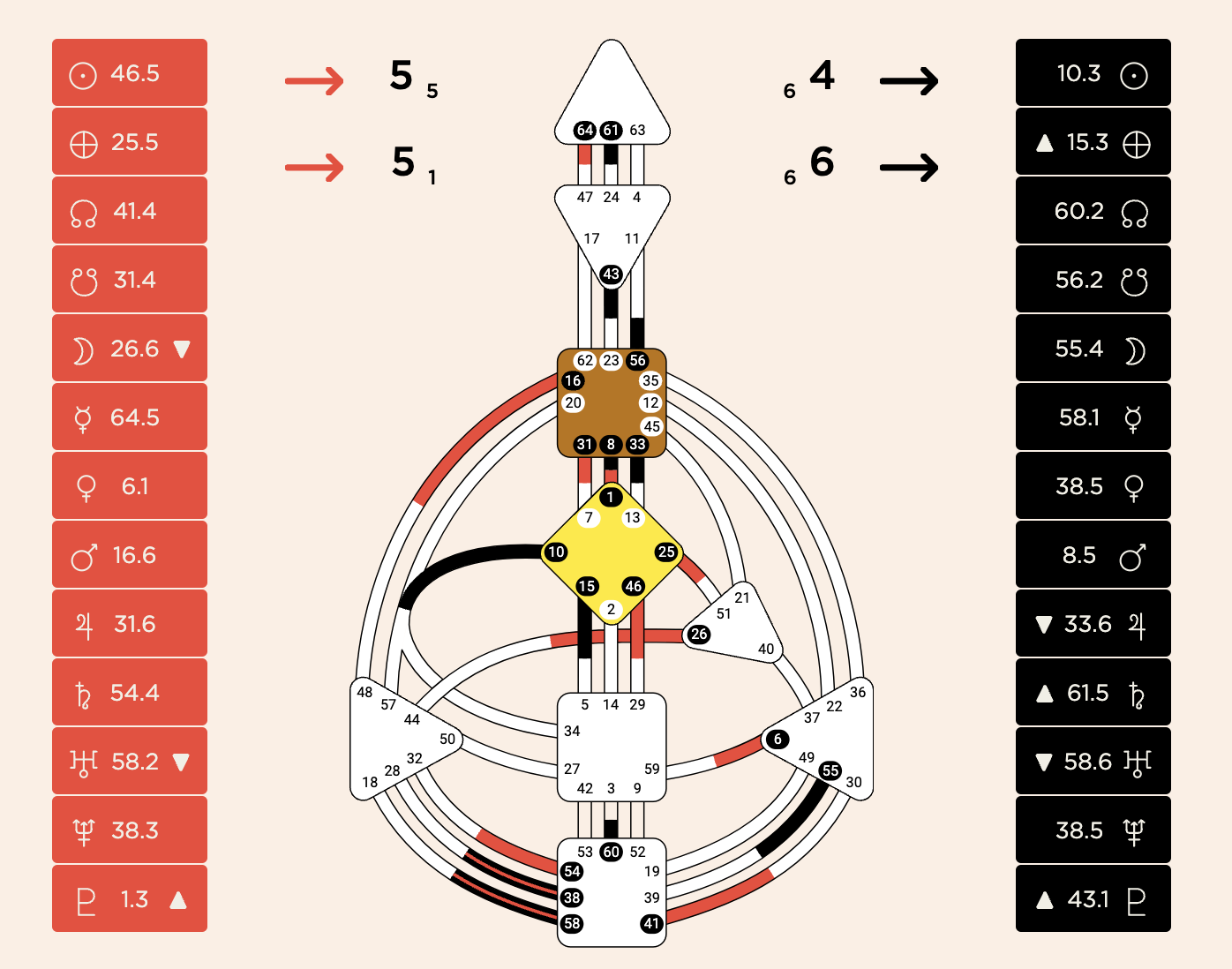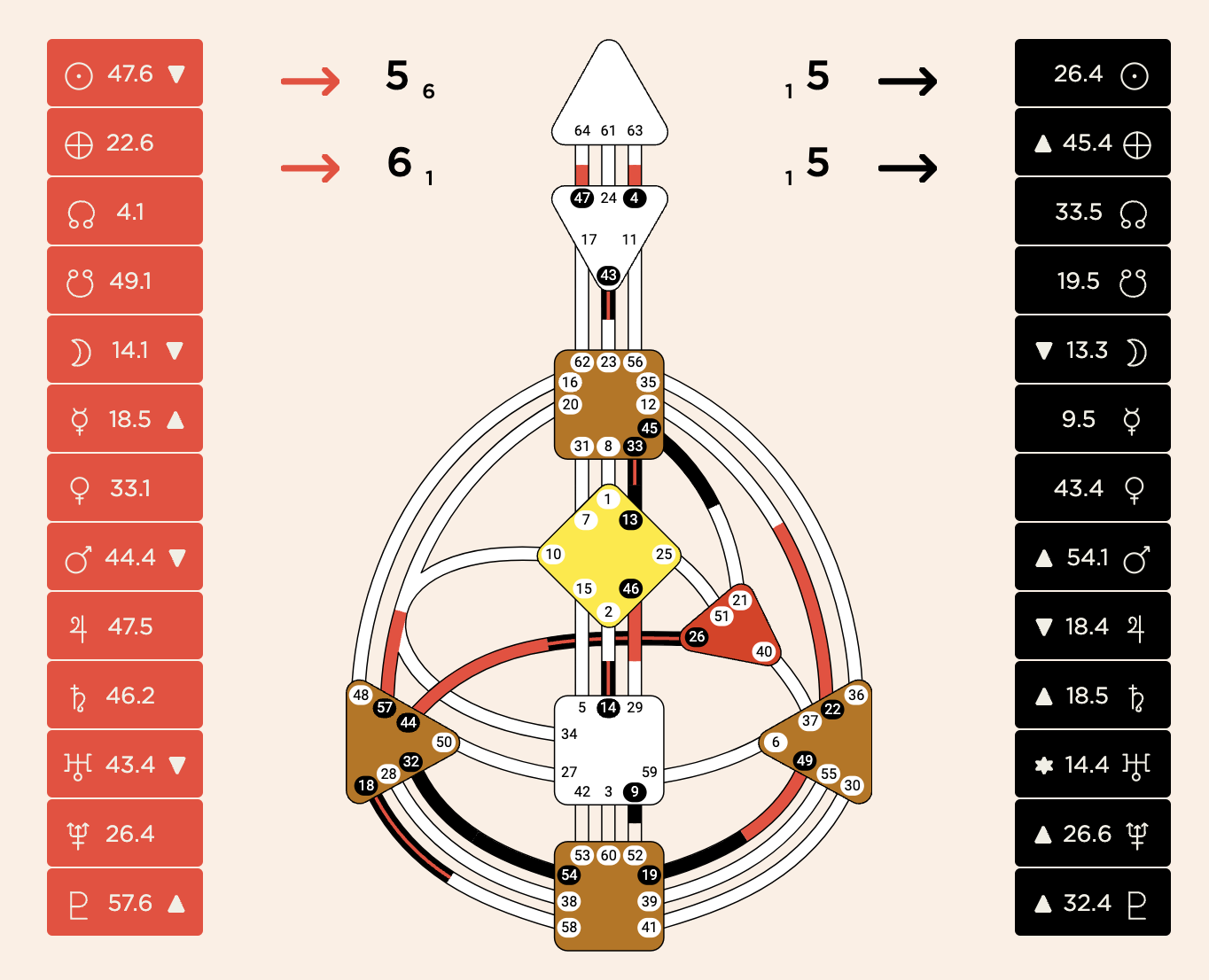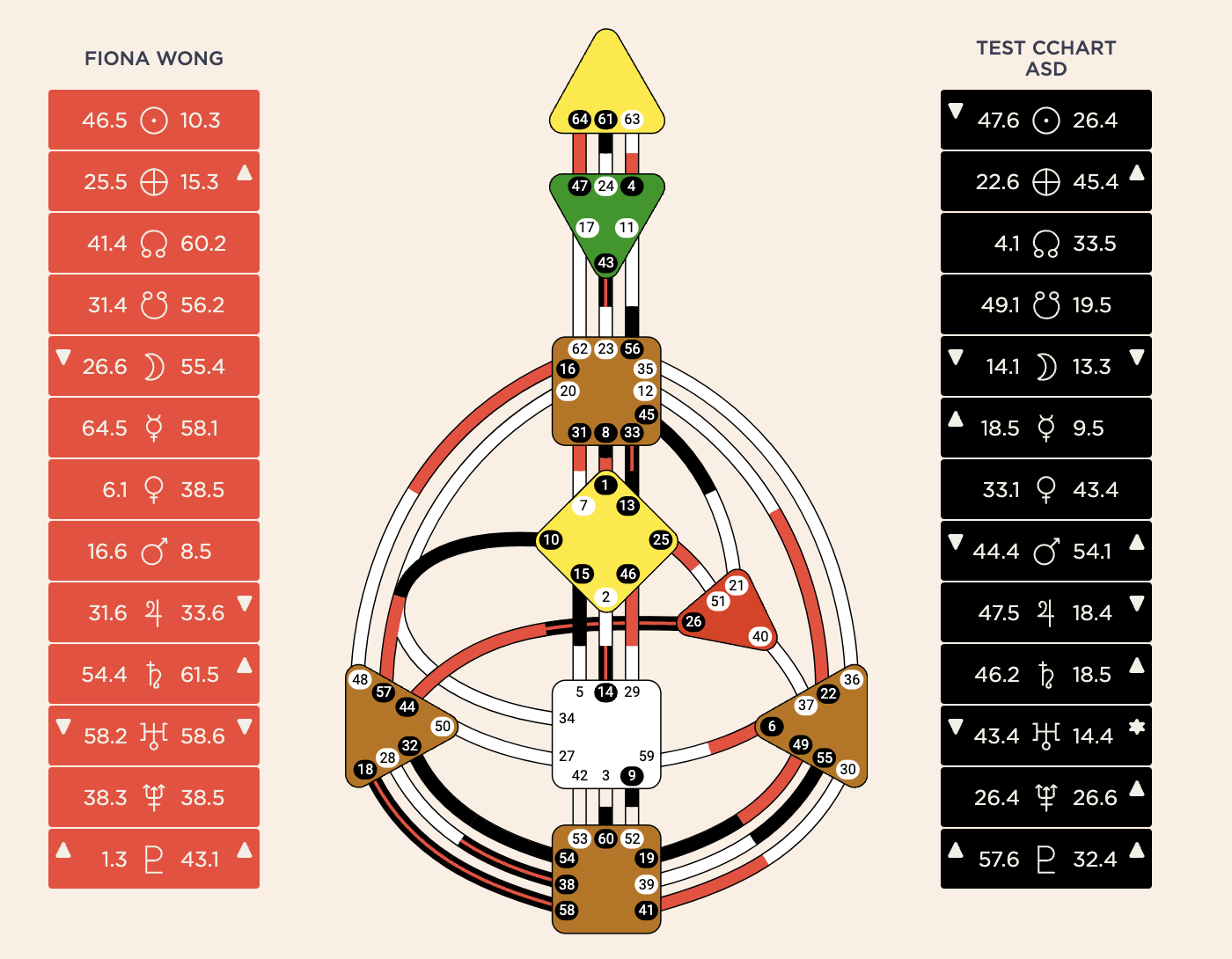What does Deconditioning mean in Human Design?
If you’ve consumed Human Design content, you’ve encountered the term deconditioning, but what does it mean?
Simplified, it’s the transition you make when you recognize where you are conditioned and disengage.
First, we need to talk about what most Human Design readers and content creators, including myself, are talking about when we use the term conditioning as a “catch-all.” Then, I’ll explain what conditioning technically means.
Conditioning as a synonym for influence
Robert Schoeber shared that conditioning only happens when we’re near someone. However, we can be influenced by people who are not around us.
For example, if you are a business owner and you are on Instagram because that’s “the thing” to do, but you hate it, you’re not being conditioned to use Instagram. You’re being influenced to use Instagram.
But for nitpicking terminology, Human Design readers tend to use the term conditioning either way. If I go in-depth with the technicalities, it’s with clients with more experience understanding their charts.
You will likely be told that you have been “conditioned “ to do something, a catch-all term we refer to as both conditioning and influence.
I hope this post can help you understand the difference so you know where other people have influenced you versus how people have conditioned you.
Both are important.
What is the technical meaning of conditioning in Human Design?
Conditioning only happens when you are in the vicinity of another person.
Specifically, you are 6 feet (1.8 meters) around that person. A person’s aura extends that distance in all directions, so when two people are within that distance of each other, they experience each other’s designs. They never need to speak or even know the other person is there. Conditioning just happens.
If you want to know more about the type of aura you have, here are in-depth guides to each type:
Here’s a visual.
My Human Design chart:
Another person’s chart:
When that person and I are within 6 feet (1.8m) of each other, this is what BOTH of our charts look like in that moment:
Do you see the difference?
When you are around another person, your chart and their chart don’t look like the standalone birth chart. Instead, they condition each other, making a different chart.
This is what conditioning technically means in Human Design.
Deconditioning cycles take seven years.
We’re all conditioned from the moment of birth. Once you are born, you are exposed to the auras of everyone around you and the people who brought you home. You are conditioned and influenced by the households and people who raised you.
This means the people you are around for the first seven years of your life are the biggest factor in your foundational conditioning. How many people attribute trauma or their quirks to their childhoods?
However, once you become aware of your Human Design, you know where you are conditioned.
Since the Human Design chart is called a bodygraph, it is a literal graph of your physical body. Therefore, you can feel it when something foreign enters your body.
Knowing your Human Design chart makes it easier because you have a picture and breakdown of how you are susceptible to conditioning. You can say, “I’m not designed to work all day, but when sitting next to my co-worker, I feel like I can work all day. I may be experiencing conditioning!”
This is when you begin the process of deconditioning.
This is also where people ask me: What do you mean by deconditioning taking seven years? Can’t I do it faster?
Let me ease your mind: deconditioning is lifelong.
However, the first conditioning cycle takes seven years to set in, so it makes sense that it takes seven years to remove it. Instead of seeing it as a race, see it as a constant.
This makes the difference between conditioning versus influences important.
Imagine you’ve been going to therapy to work on something that’s bothered you for the last year. Let’s say you cheated on a partner, and you’re working through why you did it when you loved that person.
It doesn’t have to take seven years to understand why that happened. It could take you months. It could take you longer than seven years. That’s not what we’re talking about when I’m talking about deconditioning.
Instead, if you’re living with someone designed to willpower their way through obstacles and it seems like they get high off of it, you might feel compelled to do the same. When you can’t, you feel inadequate, which may make you unfaithful. You wanted to feel appreciated for you who are. This is conditioning. You can see that the conditioning influenced you to take that specific action.
The influence can take any amount of time to work through, but the conditioning you were a part of may take seven years.
Your body will be working on other deconditioning at the same time.
Children have less conditioning
Since children don’t have as much life experience as adults, they don’t have as much opportunity to be conditioned as we do.
Fun fact: Human Design was originally designed for guardians, parents, and educators to raise children. The idea was that children are given space to live in their design and to be supported to the best of our abilities. However, parents also need to understand their own conditioning and how they condition their children.
Fun fact #2: Usually, when working with children in Human Design, we read their design. When working with adults, we read their design but also where they are conditioned. We usually enforce how children can be nurtured in their design while the more experienced, conditioned adult needs to focus on letting go of their conditioning.
👶🏻 If you are a child's parent, educator, or guardian, know that you aren’t pressured to make their lives perfect to their designs.
I’m a parent, and I know parts of my children’s chart, but I primarily focus on honoring their aura and type. They’re both Manifesting Generators, designed to use their energy throughout the day and collapse so I don’t get upset when they fall asleep on the couch. I enforce a bedtime- 10 pm on weekdays, 11 pm on weekends. For most parents of elementary school children, this sounds too late. This is how I compromise their need for exhaustion and how I need them to be awake for school.
That’s enough.
They also have an enveloping aura that overstimulates me. I’m a Projector swimming in Manifesting Generator conditioning. I don’t drink coffee, but I feel like I’m on ten espresso shots around them. Part of my deconditioning is understanding that I don’t have to stress over keeping up with them.
I’m not designed to.
Can you be conditioned or condition someone through the internet?
Technical answer: no.
Using the word conditioning as a catch-all? Sure.
Since conditioning requires the intersection of aura, the internet has influence rather than conditioning.
However, you can still feel someone’s design through the internet.
For example, when I’m on a Zoom call working with a Manifestor, I hear the power in their defined throat center. It’s inspiring, and I want that voice for myself. I can feel the precision and decisiveness in the way they speak. I might be envious and want to exercise this type of power.
But I also have a defined throat center. Mine doesn’t come from a motor the way it does for a Manifestor. My power comes from somewhere else, but I can be influenced to shift my voice because I’m trying to copy the Manifestor.
They didn’t condition me. They influenced me. For the ease of linguistics, I would, like other readers would, call it conditioning when speaking to the public.
Same example, but with true conditioning
Using the same example about wanting to copy a Manifestor’s tone, let’s say I have a Manifestor parent. I live with that parent, so for the majority of my pre-adult life, I am consistently conditioned by that parent. They don’t like the sound of my voice and use their voice as an example of what I should sound like.
When I am around that parent, my body absorbs their aura (see the example from What is the technical meaning of conditioning?), so I’m tricked into believing I have the same thing in my voice that they have in theirs.
Then, when I grow up, and I am no longer around that parent, some things could happen:
I force myself to keep using their voice despite my body’s protests. I say, “I’m not trying hard enough,” and force it.
I reconnect with my actual voice.
It’s likely a bit of both. I have physically removed myself from the conditioning and the influence, but it’s not that easy to shake. It takes time to unlearn everything I thought I knew about my voice and nurture my actual voice. It’s like a muscle that’s never been used.
(This is all an example, I don’t know my parents’ types).
Conditioning is a likely culprit when Human Design isn’t relatable.
Human Design charts are a person’s bodygraph. That’s it. It doesn’t care if you relate to it or not. Sometimes, I find other ways to explain something a client doesn’t relate to, but other times, it is what it is.
However, I make a note of visceral rejection. Not relating is one thing, but what's interesting is when a client hates what they’ve learned in their chart.
This is where we unearth that they’re designed to be someone they don’t want to be.
Their “gifts” are not what they expected or wanted.
They find the explanations offensive.
I initially felt the same about my Human Design. I hated learning that I’m a Projector because we are designed to wait for recognition and/or invitation. I spent my life feeling invisible. Partially, this is due to stereotypes of how Westerners view Asian women, and another part is how Chinese traditions value male voices over women’s. So I swore to myself I would never be that person. I would never wait. If I wanted someone or something, I would go after it.
This manifested from the deep conditioning I received throughout my household, school, and friend groups. I was also influenced by my internalized misogyny and the way I demanded myself to be valued.
It took me six months to warm up to my understanding of what a Projector is and what we are capable of. Honestly, if I never learned about my 3/5 profile, I would’ve never returned to Human Design.
That’s how badly my Human Design type triggered me.
If something is “blah” to you, maybe it’s not something you need to be worried about. However, if something gifts you that “ugh, gross” or “that’s not me at all” reaction, there’s something there you should explore.
You are also conditioned by people you’re in a relationship with
This assumes you’re also living together or spending ample time together. It’s like growing up in a household. The more you spend time with a person, the more you’re feeling conditioning from that person.
This type of conditioning is also why people “change” when they get into a relationship and feel like a “piece of them is missing” when they break up or travel away from each other.
Of course, people feel like they’re changing. Like the example above, their chart feels blended with another person’s for an extended period. When they separate, the chart returns to their birth charts, and they feel a physical shift.
There’s an expanded post here on how Human Design explains why breakups suck.
Get a 40+ page on YOUR Human Design chart
The first step to deconditioning is knowing what’s in your Human Design chart. When you know your chart, you understand what’s not in your chart. Since deconditioning is a lifelong process, this PDF is your permanent companion- something you can refer to when you need to anchor.
The 40+ page PDF is $20. Generate your chart below and then purchase the companion.



